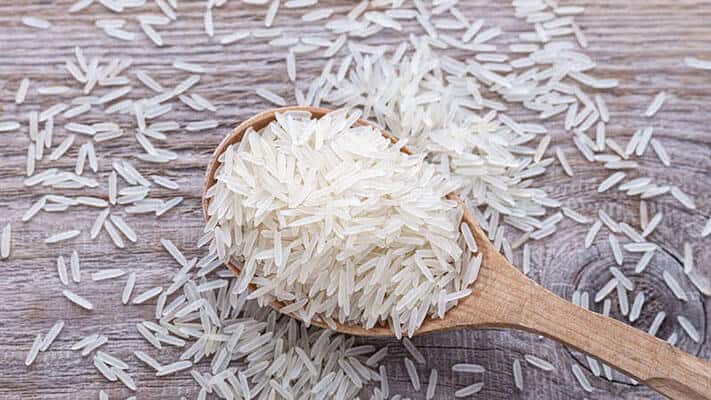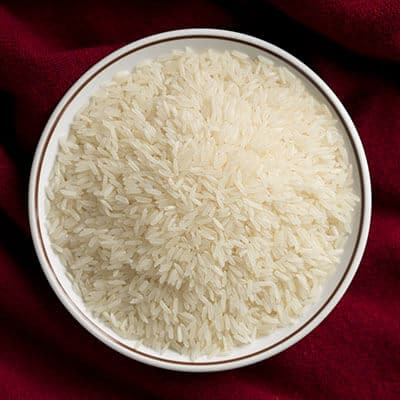More than 40,000 varieties of rice are present throughout the globe. Second thoughts are bound to originate when the array of selection is this vast. Luckily in this article, we will be discussing the comparison of basmati vs jasmine rice to find and gauge their nutritional values and health benefits.
Contents
Basmati vs jasmine rice glycemic index
The glycemic index of food measures how quickly it will get digested or the glycogen (sugar) will enter the bloodstream. In simple words, if the food breaks down rapidly and releases glycogen in the main bloodstream then it has a high GI. Similarly, if the food takes longer duration for the same process then it has a low GI.
It is known to very little that the glycemic index (GI) of jasmine rice is almost twice the glycemic index of basmati rice. The jasmine rice GI is somewhere around 68-109 though basmati’s GI is 50-58.
Jasmine rice vs basmati rice which is healthier?
To begin with, the low arsenic amount in basmati rice and jasmine’s higher glycemic index makes the former the prize winner of every contest. It helps to prevent any potential health risks such as diabetes, cancer, and heart-related diseases.
According to studies, arsenic is a heavy metal that tends to accumulate more in varieties of rice than other food grains. Thus, it can produce harmful effects on people who eat rice regularly. Furthermore, various nutrients and minerals are added in the process to boost the nutritional value of basmati rice. Consequently, consuming basmati over jasmine rice can support you with the required strength in the process.
Most importantly, only minute variations exist between one serving of basmati rice’s calorie, carb, fiber, protein, fat, and jasmine rice. Although for some people it might not be a matter of concern, one can still switch jasmine rice with long-grain basmati rice to enjoy its benefits with a pleasing aroma.
Basmati vs jasmine rice bodybuilding?
If you are health-conscious or a bodybuilder then it is necessary to consume only the right things. Go for alternatives that provide you strength from within to train hard. Rice is a staple diet for many and comes in different colors, shapes, sizes, and above all, nutritional values.
Whilst Jasmine rice is also called long-grain rice, it is slightly shorter and round than basmati rice. Basmati on the other hand is long and needle-shaped with slightly tapered ends. Both jasmine and basmati rice are equally low in fat and high in carbs, however, many bodybuilders prefer basmati.
Basmati rice digests swiftly while making way for more food and essential nutrients required for bodybuilding. It is also a good choice for post-workout meals. In addition to this, basmati rice also has three times more fiber and protein than normal white rice.
It all depends on your taste and preferences since the nutritional value of jasmine rice and basmati rice is slightly different.

Basmati vs jasmine rice nutrition
Originated in the Northern Regions of India, 1 cup of cooked basmati rice contains:
- Calories: 210
- Fat: 05. g
- Protein: 5 g
With slightly lower demand and lower prices than basmati rice, Jasmine rice is cultivated in Southeast Asian countries. 1 cup of cooked jasmine rice contains the following nutrition values:
- Calories: 181
- Fat: 1 g
- Protein: 4 g
Is basmati rice better than jasmine rice?
It is difficult to decide if jasmine rice is better than basmati rice or not. HOW? Since they both have almost similar nutritional values in one cup of serving, it is not going to make much of a difference. However, you can pick one out as per your preference of texture and aroma.
Basmati rice vs jasmine rice calories
Both basmati and jasmine rice is low in fat and cholesterol which makes them an excellent choice for people with health concerns. However, 1 cup of cooked jasmine rice provides slightly higher calories than 1 cup of cooked basmati.
Basmati rice compared to jasmine rice
One can compare jasmine rice with basmati rice through different aspects such as their shape, size, texture, origin, nutritional values, and fragrance.
More than 70% of the world’s basmati is grown in India. This long-grain needle-shaped rice variety is popularly known for its pleasant aromas and non-sticky texture. Basmati grains grow twice their actual size and become softer than before. However, you have to soak basmati rice in fresh clean water for at least 2-3 hours before preparing to ensure even cooking.
Jasmine rice which is also known as Thai Fragrant rice is majorly grown in Thailand, Cambodia, Vietnam, and Laos. As the name itself pretty much suggests, it produces a slightly sweet fragrance while cooking. Moreover, the grain is moderately shorter, rounder than basmati grains and becomes mushy and sticky upon cooking. It is widely believed that jasmine rice does not require pre-soaking and you have to only rinse it a few times. The soaking process makes it more sticky which is exactly what we are not looking for.
Basmati vs jasmine rice cooking time
According to the ideal rice to water ratio, 1 cup of jasmine rice goes with 1 and a half of water. Next, you will have to wait until the rice has completely absorbed water which generally takes around 20-25 minutes.
On the contrary, basmati rice only requires 15-20 minutes to cook.

Basmati rice vs jasmine rice taste
Owing to their strong yet mouthwatering aroma, both basmati and jasmine rice falls under the category of fragrant rice. Although their taste is almost similar, one can distinguish them based on their unique texture after cooking.
Basmati literally translates into ‘full of fragrance’ and gives a very pungent nutty taste and floral scent. Jasmine on the other hand releases hints of a nutty flavor and smells like popcorn.
Upon cooking, basmati grains become double their size and dry whereas jasmine rice becomes sticky and mushy. Both these rice go perfectly with several Asian curries, chicken, salmon, beef, stir-fried vegetables, etc. One can also add star anise and cumin in basmati to enhance its flavor.
FAQs
1. Which is better jasmine or basmati rice?
There are insignificant differences in the nutritional values of jasmine rice and basmati rice. In other words, although both these fragrant rice has equal lesser fat content and a kick of protein, basmati is still considered healthier. Why?
The first and foremost thing is the low glycemic index of basmati which makes it a premium choice for patients. The food releases glycogen at a steady rate, consequently leading to a stabilized level of energy. Moreover, it has zero cholesterol, amino acids, folic acid, and is low in sodium.
You can also buy brown jasmine or brown basmati rice since they have more essential nutrients and fibers and are optimum for health-conscious people.
2. Can I use jasmine rice instead of basmati?
Yes, you can substitute basmati rice with jasmine rice considering what you are making. In simple words, the flavor, aroma, texture of the rice can cause a significant change. For instance, only long grain basmati is preferred for biryani since jasmine rice can ruin the authenticity of this delicacy.
Moreover, we can use either basmati rice or jasmine rice to make pilaf because the actual flavors come from spices and stir-fried vegetables. Basmati rice is also the best choice for sweet rice milk pudding due to its fragrance that jasmine rice cannot give.
3. Does basmati rice taste like jasmine rice?
No the taste of basmati rice and jasmine rice is not identical but slightly similar. If you want to distinguish these fragrant rice then look for the size of grains and the texture. Basmati rice becomes very dry though jasmine rice is slightly sticky.
4. Is Jasmine rice low glycemic?
Absolutely not. According to the standards of the glycemic index:
● Below 50- Low glycemic index
● 60-70- Medium glycemic index
● More than 70- High glycemic index
Since the glycemic index of jasmine rice lies around 89-109, it has a high GI.
5. What do you eat jasmine rice with?
Jasmine rice goes well with a variety of delicacies such as:
● Sweet and sour chicken with jasmine rice
● Thai coconut jasmine rice
● One-pot vegetable rice
● Fresh salmon with jasmine rice
● Avocado salmon rice bowl with stir-fried vegetables
● Honey garlic eggplant with jasmine rice
● Tofu curry and stir-fried vegetables on the side with jasmine rice
● Tangy and spicy BBQ pork with jasmine rice
6. What can I make with cooked jasmine rice?
You can make a variety of lip-smacking delicacies with cooked rice such as:
● Jasmine rice stuffed peppers
● Cooked rice and meatballs with bok choy
● Stir-fried garlic jasmine rice
● Sweet milk pudding with cooked jasmine rice
● Fusion Korean bibimbap with cooked jasmine rice
● Sesame steak with cooked jasmine rice
● Shredded chicken and jasmine rice with garlic honey veggies on the side





